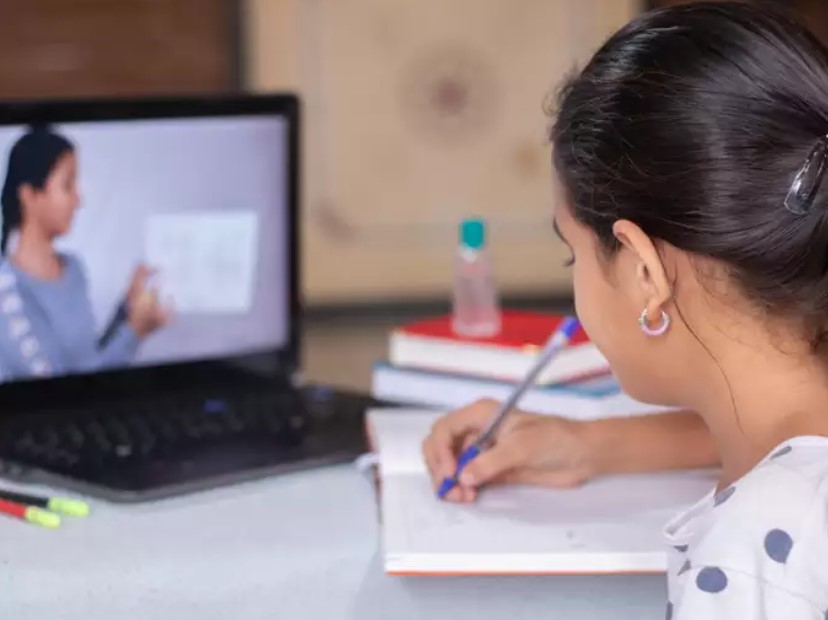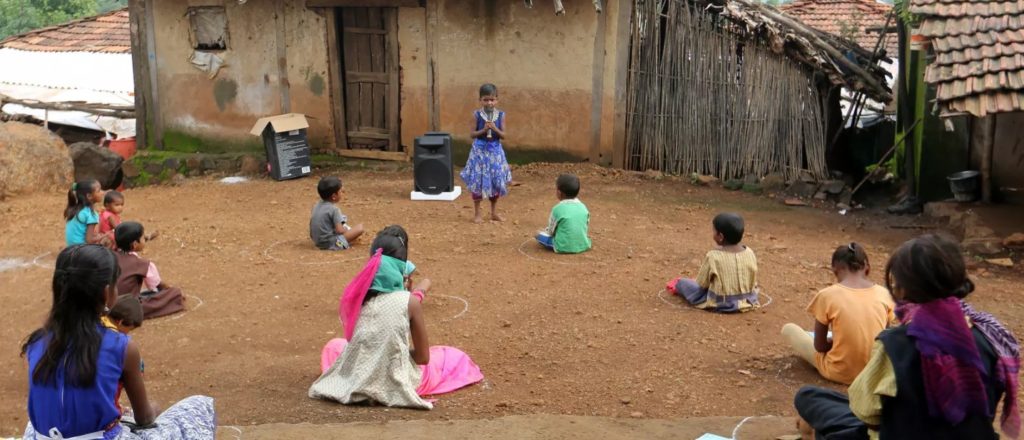
It will be an understatement to suggest that the pandemic of COVID-19 has spiralled unprecedented catastrophes around the world:. India is facing the deathly second wave with our infrastructures crumbling at the mercy of it. The effect of the same can be seen resounding in various aspects of our living life, with each aspect facing the blow like falling dominoes. While we are trying to stay afloat, stay safe, and move on with our lives at fatal risk, the lens through which we view our future has become blurred.
The disparities that scar India are manifold. Our country has struggled to lessen the gap between education in rural and urban areas. Even before the pandemic hit, access to education in many parts of the country has been a privilege and luxury. The unparalleled calamity made the education sector adapt and innovate with the resources at hand in order to prevent a gaping hole from forming roots in the education of our future.
Needless to say, the approach adopted by the urban and the rural educational sectors have their respective pros and cons, their limitations and space for growth as well. From economic to social- the hindrances that colour the lives in various regions of our country are varied; the solutions to which have to be discerned contextually as well.
It is noteworthy that within the urban space there are tiers of differences. While some educational institutions have seamlessly adapted to the online form of education, some lagged behind owing to unavailability of resources. Giving lectures and classes through video conferencing platforms like, Zoom, Google Meet, Facebook, Skype, and the like, forming WhatsApp groups of parents, students, and teachers in order to be in loop and share concerns and problems regarding the difficulties faced by digital form of learning has been a tough process for many. E-learning portals initiated by the government like Diksha, e-Pathshala, National Repository of Open Educational Resources, Swayam, Swayam Prabha, e-PG Pathshala have been helpful for not only the children, but also the teachers for whom the old-school-chalk-drawn way of teaching has been the norm.

The aforementioned, however, comes with the prerogative that one has access to the internet and also owns a smartphone or other electronic devices with internet support. There are families who own only one smartphone and if they have more than one child, they are caught in a conundrum. Moreover, affording the internet data packages becomes another hindrance. Government schools and smaller private schools also find themselves in a fix due to the paucity of resources- both infrastructural and monetary.
While the situation of the poor in the rural areas has only worsened due to the reduced employment rate, the rural population is trying to make ends meet in whatever way possible. People in many rural areas of our country, even before the pandemic hit, considered obtaining an education to be a luxury due to monetary as well as accessibility reasons. The onset of the pandemic has brought them on their knees,with barely any money to fulfill even their basic needs.
During these times, they are forced to let the education of their children take a backseat. In order to earn more money, they make their children take up menial jobs which could fetch them an additional income. The dropout rate from schools has only increased during the pandemic. A news report by India Today says, “Some 23.8 million additional children and youth (from pre-primary to tertiary) may drop out or not have access to school next year due to the pandemic’s economic impact.” Girls are made to indulge in household chores and some are made to get married so that their parents have less mouths to feed. While task forces have been set up to combat these social evils at the local level, it has been taxing. The chief of child protection at UNICEF India, Soledad Herrero says, “In a situation where families have to decide which child to send to school, girls are at risk of being pushed into (unpaid) domestic work. There have been reports of cases of violence against children as well.”
The schools which already were functioning on minuscule resources are being forced to adapt to digital learning in areas where “ghar me atta nahi, ab data kahan se layenge” (there is no atta (wheat flour) at home, where would they get internet data packs from) is the predominant emotion. The inequalities in the villages are divergent- while some manage to have access to digital education,others, out of helplessness, dropout of school. The teachers themselves who are not adept in this form of teaching are being forced to adapt to new measures. Due to the absence of students, schools are forced to shut down.

To combat these situations, some villages are making do with weekly meetups by setting up learning centres, maintaining social distancing and adhering to the regulations, in order to impart a distant form of education they were familiar with. However, these efforts were also halted after the severity of the second wave of the pandemic. Due to the global health emergency, government schools who used to provide mid-day meals have also ceased. This has resulted in the poor nutrition of children for whom these meals used to be their main source of nourishment.
Another point of contestation which affects both the urban and rural areas alike is that the onus of education has completely been shifted onto the parents. In a paper titled “Education for Rural Development: Towards New Policy Responses” published by UNESCO, it has been found that parents who can help their children in their studies, or even motivate and take part in their daily activities have become better students. A conducive home environment and support from home plays a huge role in the moulding of children. However, parents who are barely literate themselves are at a loss when they are unable to help their child. In addition to the insufficiency of proper infrastructure and resources, the aforementioned is a factor which has profound repercussions like the child being unable to receive educational or motivational support at home.
The students pursuing their higher education are in a fix, too, as there is a dearth of opportunities, both in the rural and urban areas alike. For the rural population, the travel cost to reach their institutions used to be a burden even before the pandemic; now due to the lack of further monetary funding, the access to higher education has become a far cry. We also need to keep in mind that there are many children who have faced personal trauma during these unprecedented times and we should be considerate of their mental conditions as well.
Another point of concern is how due to the pandemic the unemployment rate has further increased. An article named “Impact of Pandemic COVID-19 on education in India” in International Journal of Current Research- July 2020 states that “the Centre for Monitoring Indian Economy’s estimates on unemployment shot up from 8.4% in mid-March to 23% in early April and the urban unemployment rate to 30.9%.” The students of the urban areas are in fear of being rejected from companies abroad through campus placements, their exposure to internships, student exchange programs, admissions to institutions abroad, and the like might jeopardise their future prospects. While the students of the rural areas find themselves faced with lesser opportunities in comparison to the already few opportunities they had privilege to.
A major point of worry is the school board exams. While the 10th and the 12th CISCE and CBSE board exams have been cancelled, the decision for 10th and 12th state board exams are in the process of being decided upon by the Supreme Court. The evaluation method in the face of cancellation of the same has been a source of distress. The CISCE is considering the performance of the students in the last six years in order to finalise the final board results, while the CBSE is planning to take the results of classes 10, 11, and 12 to do the same. Parents’ associations and students alike have flagged concerns over this form of evaluation being arbitrary and hindering the future prospects of students. The Supreme Court is to hear counsels from both the boards over this matter of concern.
In the light of the current scenario, it is safe to say that the educational sector has taken a huge hit with detrimental consequences coming our way. Only a small section of the country indulges in partial digital form of learning. The backwoods of our nation, who are the backbone of our nation, should have access to such infrastructure and resources which might aid in their fight against the ‘new normal’ we are setting into.
Policies and funds to lessen the gap by not only the government, but also by private organisations is the imperative need. Distant learning has become the norm, thereby, creating capabilities, innovation, and opportunities for the students and teachers alike, engaging modules for disabled students, adhering to aspects of mental health are few of the many facets which have to be adhered to. The pandemic expected the children and teachers countrywide to adapt to e-learning for which they were not prepared for. Access to technology and the internet has become the need of the hour.
Smriti has done her BA in Literature from Hindu College, Delhi University and MA in Literature from Jamia Millia Islamia University. She is also an Alumna of SBI Youth for India Fellowship.
In a room of her own, you will often find Smriti speak to spectral masked vigilantes who save the world of mortals during nocturnal hours. As a sensorial hybrid, she believes in the sight of bright colours, sound of mountain rivers, loving touch of jumping puppies, and fragrance of old books. Smriti aspires to work as a teaching faculty to create a dialogic classroom space with vibrant discussions.

